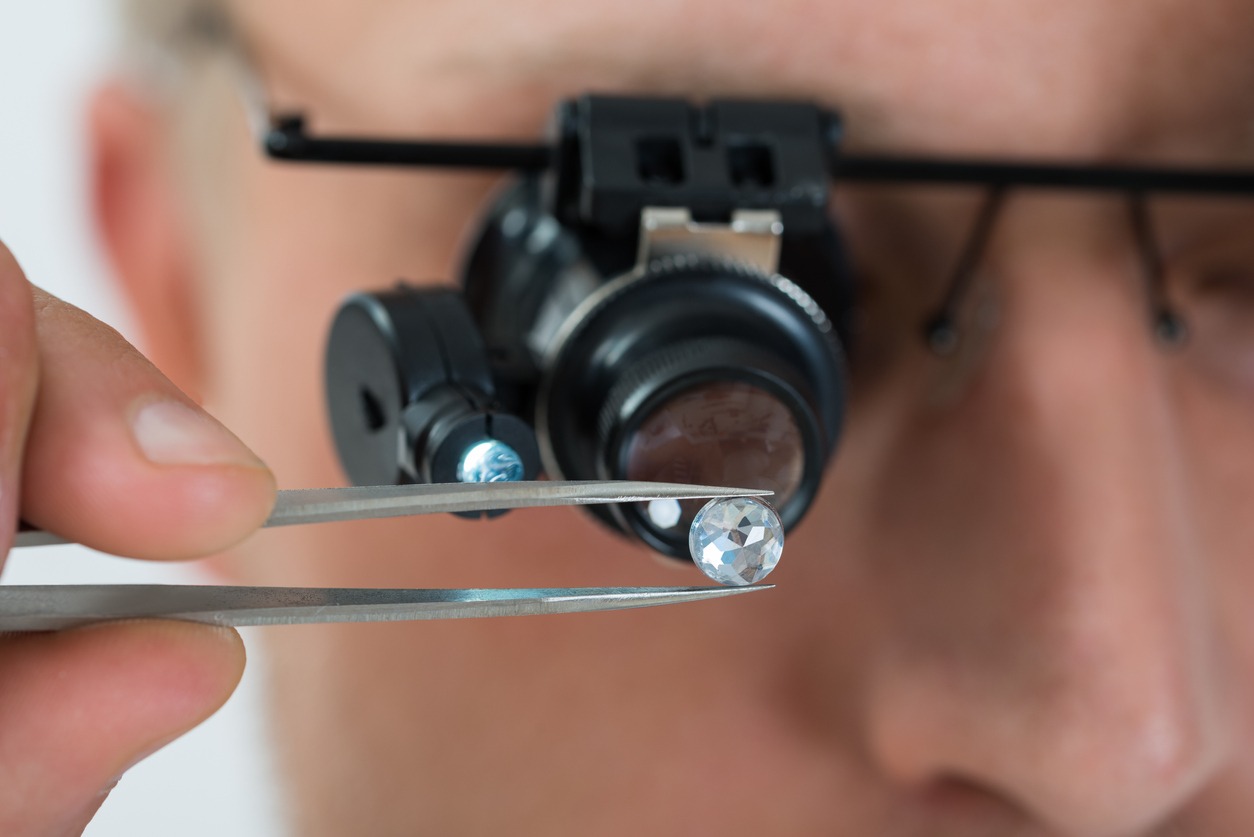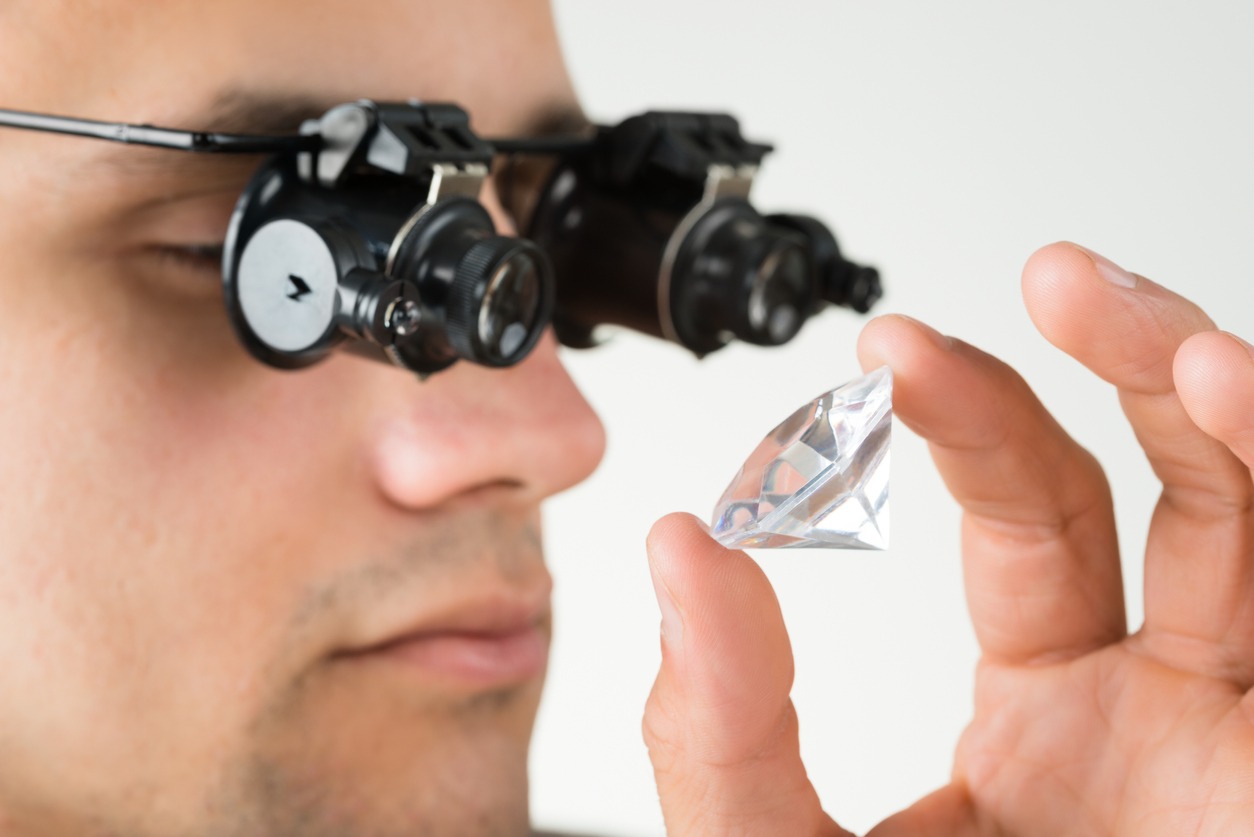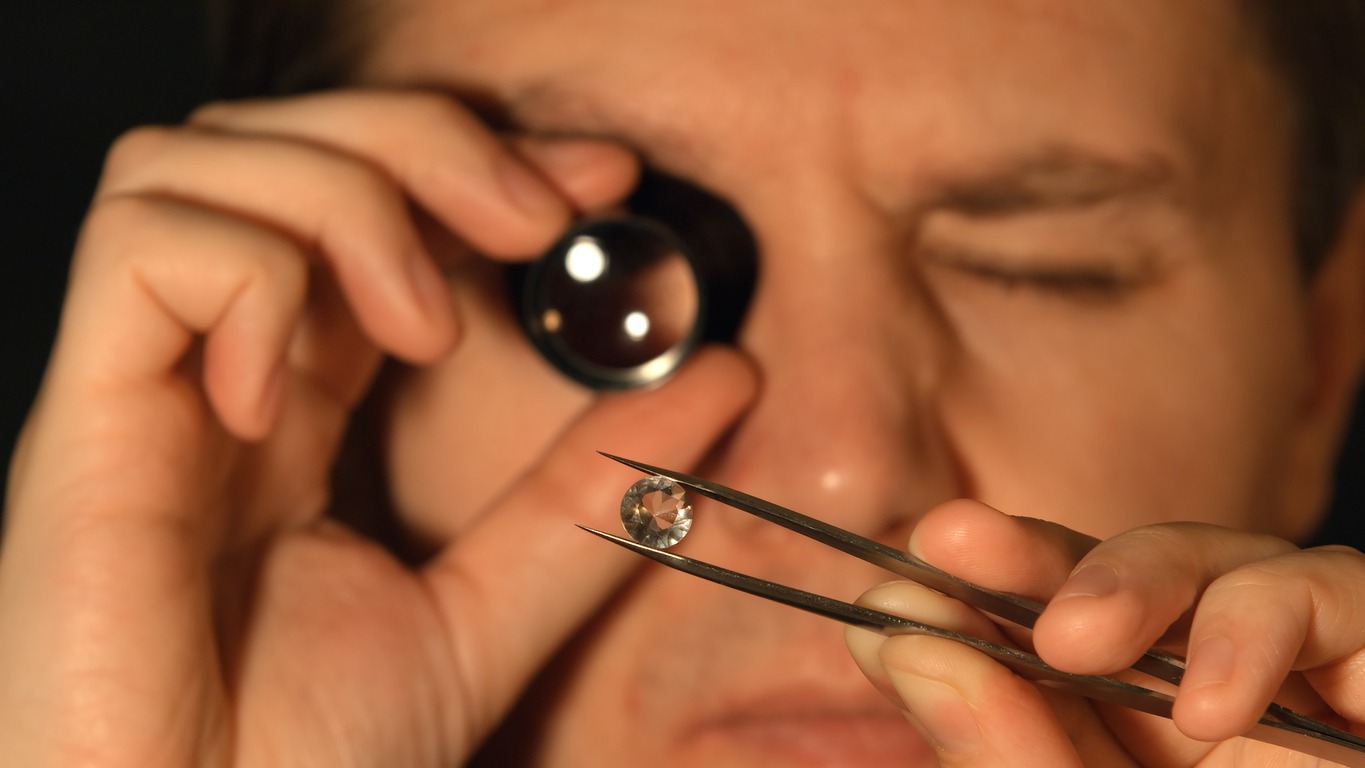Understanding the basic jewelry terminologies used frequently in the industry is essential when you are exposed to the jewelry industry. The jeweler’s loupe is the most common tool used in the jewelry industry. Knowing these phrases is crucial if you’re looking to invest in the jewelry industry, are studying metalsmithing and jewelry design, or both. Although jewelers’ loupes are routinely used by owners and merchants, given the customer’s lack of expertise in the industry, he or she is more at risk of being taken advantage of. It is not difficult to use a loupe, but it does take practice to spot minute irregularities.
You’ll learn the importance of utilizing a jeweler’s loupe from this article.
What Is A Jeweler’s Loupe?
The most popular kind of jeweler’s magnifier is a jeweler’s loupe, a portable magnifying lens used by jewelers to examine gems and diamonds. The jeweler can see minute details more clearly by using a jewelry loupe.
A collapsible magnifying glass is known as a jeweler’s loupe. It is a little instrument that folds into a smaller piece and has a diameter of about half an inch. It has a lens that is between 18 and 21 millimeters in diameter and a typical 10x magnification. Increased light transmission through larger lenses enhances image quality. It comes in a wide variety of magnifications.
Since the Federal Trade Commission mandates grading at a 10x magnification, a jeweler’s loupe often has this level of magnification. Under a 10x magnification, imperfections are insignificant. Higher power lenses also have a shorter focal length and a narrower field of view, which makes them inadequate for inspecting jewelry.
Most jewelers are fixated on their loupes and wear them as a pendant around their necks. Because it is a basic necessity, jewelers take great pride in owning this item. A jeweler without a loop is comparable to a photographer without a camera. A professional jeweler can be recognized by his use of his loop as his primary identifier.
Types Of Jeweler’s Loupe
Based on their magnification capacity and capabilities, also known as lens variation, jeweler’s loupes can be divided into a variety of different categories.
- A single lens makes up a one-loupe magnifier, which has a limited range of magnification. It has a blurry image and is of poor quality.
- In order to examine jewels more closely, a triplet loupe, which has three lenses and provides better magnification and no color distortion, is used.
Loupe Terminology
To fully utilize a loupe’s capabilities, you must be familiar with its terminology.
- Focal Length: This refers to how far an object must be from a loupe in order to achieve the best focus and magnification. Magnification power and this length are inversely correlated.
- Field of view: The area that can be seen through the lens is measured using this term. Magnification power and this view are inversely correlated.
- Depth of field: This gauges how close and far you can get to an object while still maintaining sharp focus on it. The field gets shorter the greater the magnification.
How To Use A Jewelry Loupe
As soon as you get the hang of it, using a jewelry loupe is simple. To learn how to use the instrument properly, though, it does take some practice. It is important to understand how to use a loupe since it enables you to recognize several features of a stone relatively fast. It is also much less expensive than other gemological tools, therefore you may easily buy it for your own use.
You may learn how to use a jewelry loupe by following the instructions below.
- Your index finger should be inserted into the slot on the folded loupe. It will be at the end across from the lens. You can hold the loupe in whichever hand feels most comfortable because you can see the lens from either direction.
- Directly over your eye, place the loupe. In order to keep your hand steady, you should press the knuckle of your thumb on your cheek. For added stability, rest your elbow on a table.
- Bring the diamond up to the lens’s edge with your other hand, about an inch away. Move the stone around until you can see it clearly.
- Before seeing the diamond from various angles, examine the diamond’s surface.
- Compare what you see to the diamond’s grading report to verify it.
- You should be able to see the entire stone at once while looking at a small gem. You might have to concentrate on one section of a larger rock at a time..
Tips And Mistakes When Using A Loupe
It takes considerable practice to become proficient with a jewelry loupe. The following pointers will assist you get started using a loupe.
1. Select A Loupe With Three Lenses Cemented Together
The triplet variety of these loupes is available at the majority of optical stores. The triple-type loupe fixes two issues that other lenses struggle with. They lack the color tinge that can be seen on the borders of other lenses. Additionally, triple-type lenses do not exhibit visual distortion.
2. Go For Achromatic And Aplanatic
The most effective loupe is one that is aplanatic and achromatic. An achromatic lens is free of undesired exterior colors thanks to its construction. Aplanatic lenses’ tight control over their focal point results in sharper images.
Select a jewelry loupe with a black body. The body of your jewelry loupe should be black. In contrast to gold or silver, black does not reflect light as much and does not let in outside light.
3. Move The Gem, Not The Loupe
When examining the stone, only move the gem—never the loupe. To retain focus, keep the loupe as steady as you can.
4. Use Both Eyes
If you are using a jewelry loupe, it may be tempting to close one eye. This might not be ideal, though. To lessen eye strain, keep both eyes open.
5. Check Your Light Source
Before examining the stone, make sure you have a suitable light source. It shouldn’t be too bright or too dark in the area. As bright LED illumination has a tendency to be harsh, you should avoid it. To reduce the chance of throwing shadows on the diamond, overhead lighting is preferable.
6. Place The Light Behind The Stone
By positioning a light source behind the diamond and shining it through it, you can see inside the stone clearly. You can use this to examine the inclusions in the gem.
This advice works remarkably well with colored stones but can occasionally be confusing in diamonds.
7. Grade With The Naked Eye First
Inspect the diamond for any noticeable imperfections or colors before using the loupe. Because we often see what we expect to see, it is crucial to grade the stone with your eyes before putting it under a magnifying glass. You risk missing some important details if you solely use the loupe to view the gem.
How To Prepare A Stone Before Louping It
A diamond should be prepared for inspection so that you can thoroughly examine each of its facets. These are the steps you must take to get a diamond ready for testing.
1. Clean The Diamond
To avoid mistaking any dirt or dust on the diamond’s surface for inclusions, clean it before you inspect it. The stone can be cleaned by immersing it in ethyl alcohol, followed by lint-free drying. Alternately, you might take the gem to a jeweler for expert steam or ultrasonic cleaning.
2. Remove The Setting
It is challenging to properly inspect a mounted stone. The metal of the setting has the ability to change the color of the gem in addition to concealing flaws. Prongs are frequently used by jewelers to hide imperfections like cracks or blemishes. Remove a stone from its setting so that you can examine it without any obstructions in the way.
Conclusion
When buying a diamond, being able to use a jewelry loupe is helpful. It would be beneficial if you looked at gemstones the same way you would a car before purchasing one. To assess the value of the stone, it is critical to see any inclusions or flaws in it. A jewelry loupe requires some work to become proficient with. Ask a diamond specialist for advice on how to use a loupe properly. Additionally, they will provide you tips on what to look for when examining a diamond.



